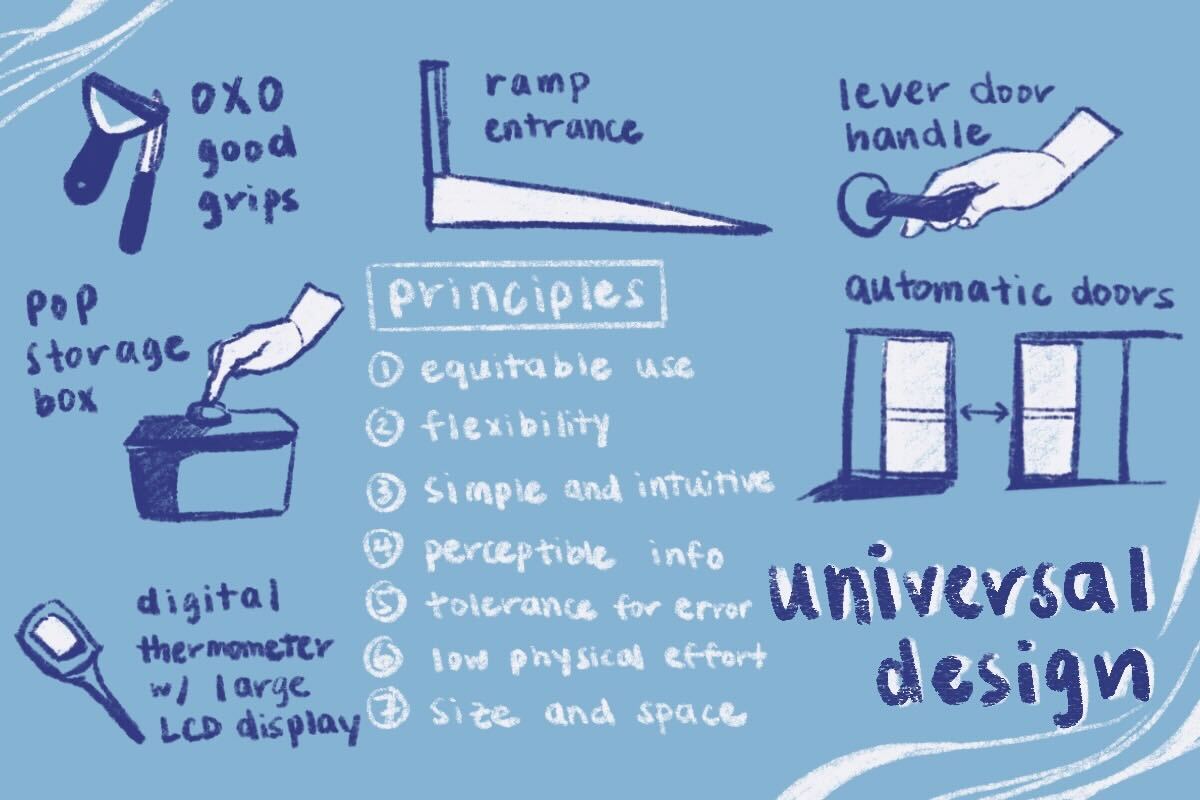Doors that swing silently open and hit you in the face. Guide rails through hazardous terrain that stop abruptly, leaving you stranded. Fire alarms that rely solely on the sound you can’t hear.
Those are just some of the barriers that people with disabilities face when they try to navigate buildings, transit systems and other parts of our exclusionary built environment. Even in recent city developments, such as Ottawa’s LRT system, blind passengers are left fumbling to find the train doors.
Despite the growing awareness of Canadians’ right to accessible spaces—and stringent laws to guarantee that right—advocates for people with disabilities said construction companies and the architects they work with continue to ignore the needs of the people they are supposed to serve.
Yet, more than six million Canadians over the age of 15 identify as having a disability, according to the 2017 Canadian Survey on Disability. That means people with disabilities account for 22 per cent of the population.
“If you had to just look at the numbers, person per person, that’s roughly the same number of people in this country who identify as not being white,” said Mahadeo Sukhai, research head and chief accessibility officer for the Canadian National Institute for the Blind (CNIB), said. “For every person who identifies as [BIPOC], there is somebody in the country who also identifies as [having] a disability.”
Despite these numbers, 73 per cent of Canadians with disabilities who interacted with a federally regulated organization reported that they had encountered at least one accessibility barrier in the last two years, according to a StatCan study released in August. This means survey participants struggled with basic tasks such as sending a package or using bank services.
More than half of the reported barriers were related to transportation design, including lineups and lack of accessible seating.
Experts and advocates are calling for change. Former Lieutenant-Governor of Ontario David Onley, a wheelchair user, reviewed the province’s implementation of its Accessibility for Ontarians with Disabilities Act (AODA) in 2019. Onley deemed Ontario nowhere near its goal of being fully accessible by 2025, and he specifically noted physical barriers in the built environment as one of the most urgent concerns.
He singled out architects and architecture schools for not doing enough to teach their trainees about usable designs for people with disabilities. As an example, he pointed to a host of accessibility barriers for people with low vision, no vision or mobility disabilities at Toronto Metropolitan University’s Student Learning Centre in downtown Toronto. The centre has concrete columns obstructing staircases, incorrect or no braille on some signs, and glass walls with no railings or colour markings to guide students with impaired vision, his review noted.
This brings up a question: Should architecture schools be doing more to teach their students about inclusive design?
A constitutional right
Only 24 per cent of countries have a constitution that explicitly prohibits discrimination against people with disabilities. Canada’s Charter of Rights and Freedoms is one of them.
These protections are impressive on paper, but little is being done to translate them into the real world, according to a 2018 article in the National Journal of Constitutional Law. The article criticizes the slow movement of recent legislation, such as the AODA, meant to make accessibility and the rights of people with disabilities more present in society.

As both a professional and a person with hearing loss, Kurdi is frustrated with the lack of action on making built environments accessible. Despite goals laid out in legislation such as the federal Accessible Canada Act, promising to make Canada barrier-free by Jan. 1, 2040, and the Ontario Human Rights Code, established in 1962, that appear promising on the surface.
The federal government passed the Accessible Canada Act in 2019 “to try to make up for the fact that we’re almost 40 years out from the Canadian Charter of Rights and Freedoms that was changed to recognize people with disabilities as equal citizens,” Kurdi said.
“The Human Rights Code says buildings and spaces shall not discriminate against people with disabilities and yet they do,” she added. “Our building code does and has been [discriminatory] for almost 40 years. How do we reconcile that?”
She said this is disconcerting for people like her who are disabled. Especially when it’s her rights that are being denied.
“People with disabilities are angry about this,” Kurdi said. “Why would you send for another 20 years? You haven’t done anything for the last 40. These are my rights. This isn’t an inconvenience. This is protected by the charter.”
‘Ticking all the legal boxes’ dismisses reality
One key problem is that architecture schools tend to focus on design that meets the requirements of accessibility legislation—ticking all the legal boxes—rather than the real-life needs and experiences of users. This is according to researchers from the architecture department at Aalto University in Finland, who presented their findings at a 2018 conference on universal design in post-secondary schools.
The researchers highlighted the importance of giving architecture students a more comprehensive view of the design task and asking them to consider a wider range of people using the spaces in question. This practice is called universal design, or the design and composition of an environment so that it’s accessible to all people regardless of age, size, ability or disability.

“[Students] are still being taught there’s design, and then there’s accessible design,” Kurdi said. “That doesn’t make sense to me. If you have design and then accessible design, don’t you really mean design that works for everybody and discriminatory design? If it’s not accessible, isn’t it discriminating?”
Her comments ring true for Norah Allan, a fourth-year student studying architecture at Carleton University’s Azrieli School of Architecture and Urbanism. When asked what she had learned about universal design, Allan did not have much to say.
“I’ve been taught a few ‘tips and tricks’ per se about universal design,” said Allan, who described having ramps and elevators in buildings, at least one larger stall in bathrooms and size specifications for emergency exit landings. “[People giving advice] assume a person with a disability is in a wheelchair.”
The concept of universal design has not been a prominent part of her education so far, and the classes where it is discussed focus solely on wheelchair access, Allan said. On the other hand, she noted inclusive design has been an important part of one class project.
“The project I am working on right now is located in an underdeveloped community, and a big safety issue of the area is a lack of accessibility,” Allan said.
She added she welcomes the opportunity to learn more about inclusive design.
It is generally recognized that the benefits of universal design are not limited to a specific group of people with disabilities, the Finnish study notes. As we all age, almost everyone will experience mobility and sensory limitations at some point in their lives. That’s why it’s important to teach students a user-driven approach and to take both accessibility principles and the lived experiences of those with disabilities into account in design work, advocates said.
And yet, accessibility is still considered a niche issue by many in the design field, according to Sukhai.
“Accessibility continues to be seen by everybody … as something that isn’t relevant to … the majority of people,” he said.
Lack of diversity in schools and beyond
One problem is the lack of diversity in the field of architecture, said Emilie Cryderman, programming co-ordinator for the Carleton Disability Awareness Centre (CDAC). Cryderman, who lives with chronic pain, said she applied to architecture programs after graduating high school but encountered barriers even in the application process.
“[Some schools] required me to have physical photos, but if you have a physical disability, that might be difficult for [people] to do,” Cryderman said. “If we create barriers for people with disabilities to apply to architectural programs, the field of architecture is never going to get diverse enough.”
A 2018 article in The Architects Newspaper, a U.S. publication for professionals in the industry, states that the absence of disabled architecture students and architects relegates people with disabilities to topics of discussion, rather than empowering them to become agents of change.
The article points out that many American Ivy League schools of architecture—those at Yale University, Harvard University, Princeton University, Cornell University, the University of Pennsylvania and Columbia University—have historically been physically inaccessible for people with lower-limb disabilities. Even after the passing of the Americans with Disabilities Act (ADA) in 1990, Yale, Princeton, Cornell and Columbia still had spaces inaccessible to those using wheelchairs.
Lily Rabinovitch, administrative co-ordinator for the CDAC, said people with disabilities need a seat at the table to be able to affect change.
“There’s a lot of change that needs to happen,” Rabinovitch said. “If we can’t get people with disabilities into architecture because of the barriers, then they’re not going to be able to change the field of architecture to make it more accessible.”
Accessibility must be an integral part of architecture, advocates said.
“We have to stop treating these problems as theoretical problems,” Sukhai said. “These are problems that everybody faces and if we don’t recognize that … we’re never going to go anywhere.”
In the era of Black Lives Matter, the battle for abortion access and calls for gun law reform in the States, Kurdi said calls for greater diversity and inclusion are having an impact in a wide range of fields, including architecture. Accessibility for people with disabilities should be a fundamental part of this shift, she stressed.
“Diversity and inclusion could be our real turning point, as long as people embrace accessibility as a key part of that,” Kurdi said. “Accessibility has to be an integral part of the process, just the same as sugar is integral to a good cake. It can’t be an afterthought.”
Featured image by Angel Xing.





